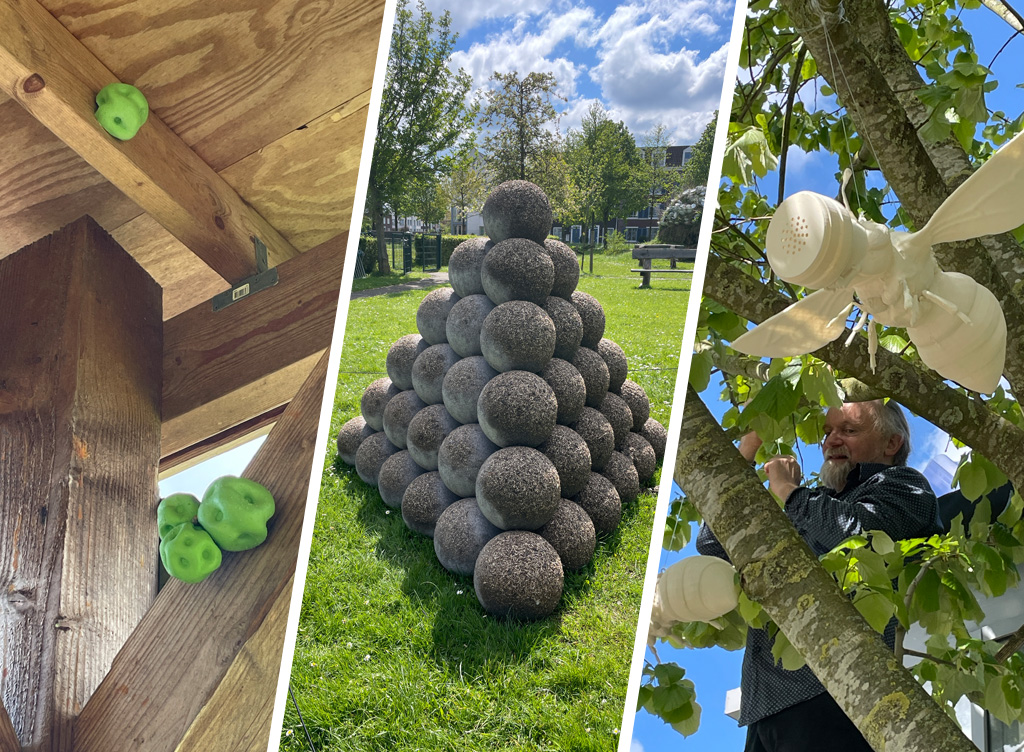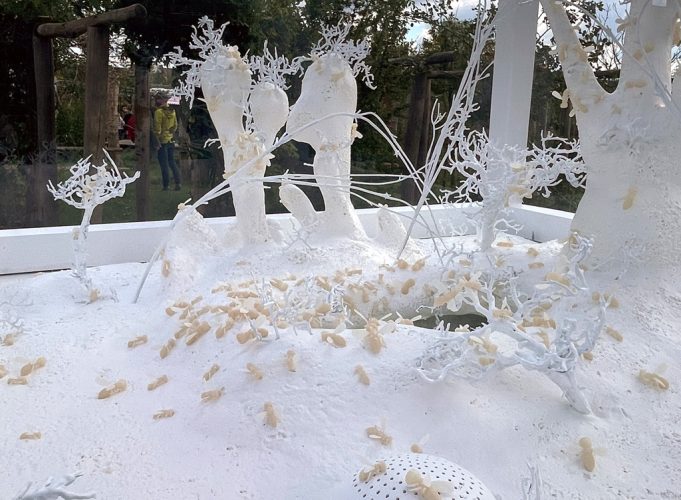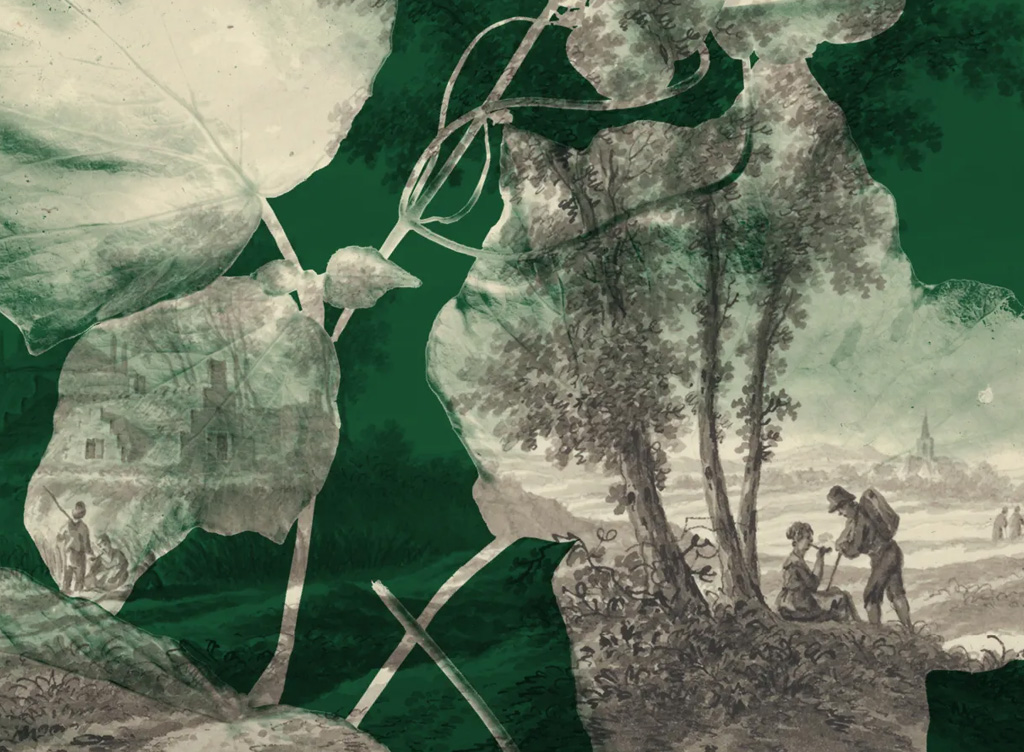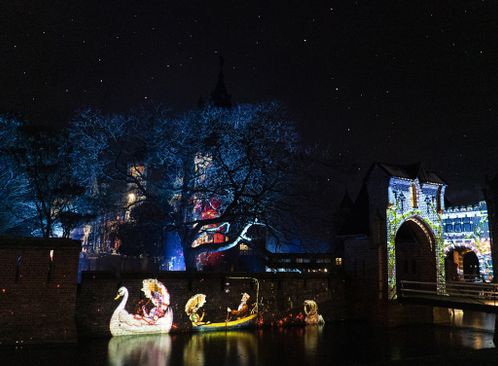The bee population is in crisis, and this is bad news for us humans. The artists behind Pollinations in Steede Hoge Woerd are trying to turn the tide.
Steede Hoge Woerd has been doing its best for bees for some time now. A work of art by Zeger Reyers entitled Bee Embassy has featured in this city farm, part of Castellum Hoge Woerd fortress, since 2022. It’s a huge mound of earth with 4,500 plates sticking out, and covered in flowers. A colony of black bees lives in a dome inside the mound. This is an endangered Dutch species that has been around since Roman times. In the exhibition Pollinations – the art of pollination, another four artists offer an ode to bees.
Fertile meadow
Artistic duo Driessens & Verstappen start the counterattack with their work Flora Balistica. They made seed bombs the size of old cannonballs from soil and flower seeds, and piled them up to form a pyramid. It’s a reference to Castellum Hoge Woerd’s military past. They chose seeds from bee-friendly crops, which were already being used in Roman times. As the year progresses, their work of art will disintegrate into a fertile meadow of flowers.
The bees are in dire need of this help. Global warming and soil depletion are jeopardising biodiversity. Honey bees, solitary bees and other insects are dying out. Some scientists are already talking about an insect Apocalypse. And this isn’t without risk to humans: one in every three mouthfuls of food that we eat is thanks to the work of bees and insects.

Gasmasks
Bees find their way around using their sense of smell, a process that is disturbed by chemicals and particulate matter. This is why Peter de Cupere shows the creature wearing a gasmask in his work. Five huge ceramic bees are hanging in a tree next to the greenhouse at the Steede. The gasmasks allows real bees to go inside to find food, nest material or shelter. His second work of art is also an invitation to bees. It’s a showcase containing a white landscape with tiny gasmask bees. White is the colour that most attracts bees. A grid in the showcase emits a mild flower aroma.
The artist explains that he has always been fascinated by smell. ‘I made my own perfume from grass when I was 10 years old, and wore it to school every day. People reacted to the smell when I got on the bus; it cheered them up. The only downside was the pale-green stains in my neck.’
Invisible task
Robin Koek created a digital work that shows how bees see the world. Sound and image on a tablet change as you walk through the garden. ‘Bees communicate via a dance, telling each other where they can find something nice, for example,’ he explains. ‘They perceive things in a unique way. When flying fast, their vision is different from when they hover.’ This is reflected in his work: pixeled, vague images if you move, more focused when you stand still.
But what bees are really after is pollen. Annemarie Maes is an artist and beekeeper, and she studied the types of pollen that her bees took into their nest. She takes pictures using an electron microscope and collects all her information in a pollen database. She enlarges the pollen from mint plants to form sculptures that pop up throughout the garden, giving the invisible task of these tiny creatures the credit it deserves.
Once you’ve seen Pollinations, you’ll feel nothing but admiration for these humble creatures.
until late December 2024, Steede Hoge Woerd, utrechtnatuurlijk.nl/pollinations








